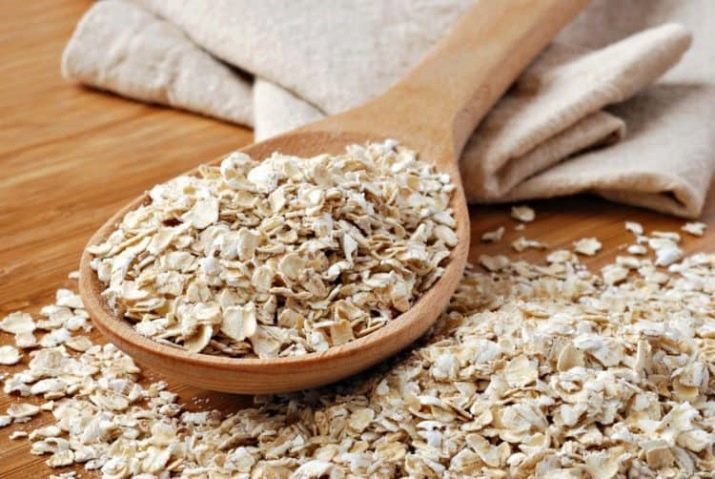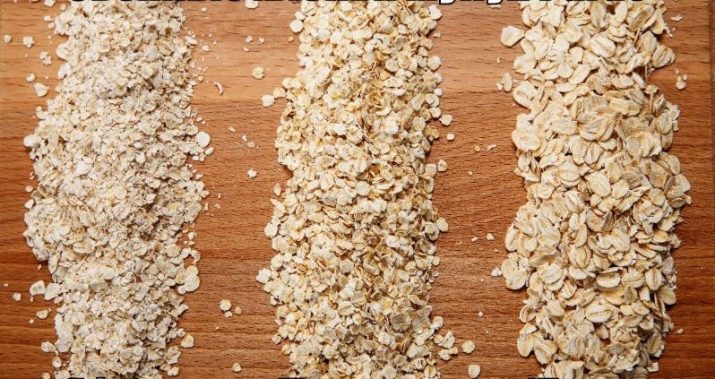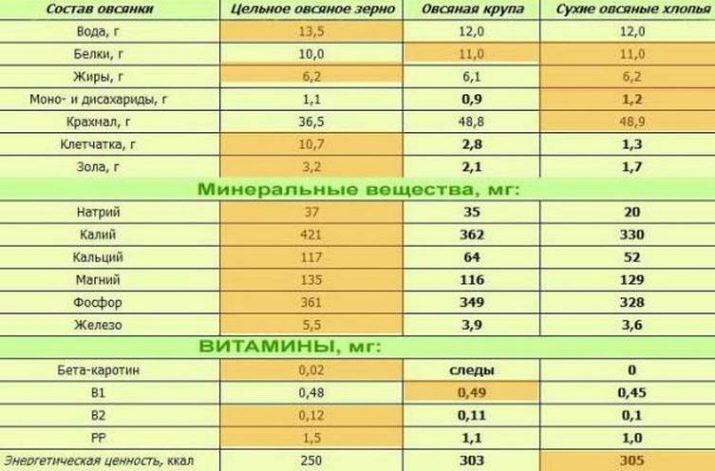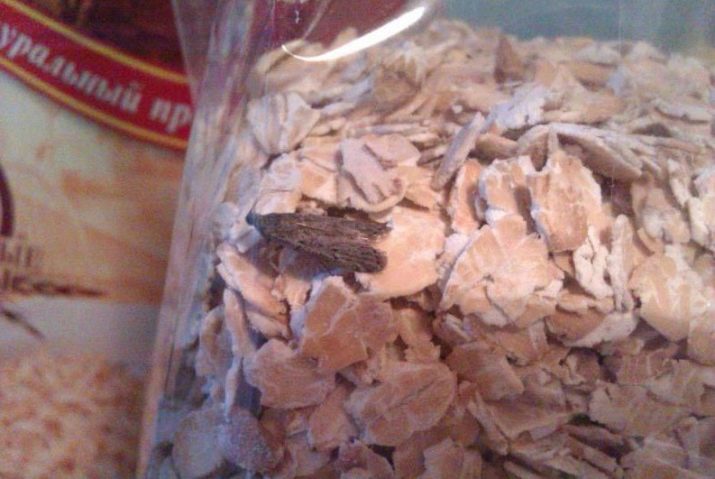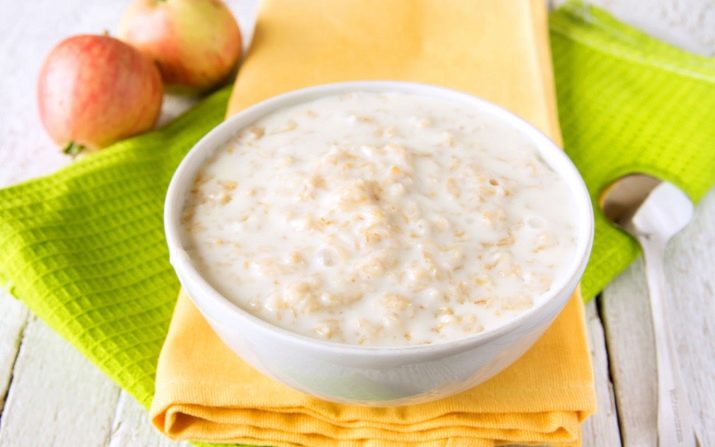Oatmeal "Extra"
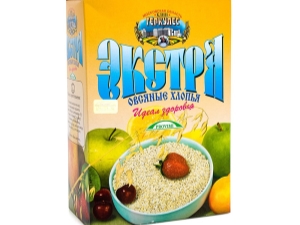
Various cereals occupy an important place in the diet of lovers of healthy food. Very popular are oatmeal dishes, for example, the famous oatmeal.In order to properly plan your diet, it is worth considering what the Extra cereal is, what types of cereal are in general, and what are the benefits and harms of oat cereals.
Classification
Since Soviet times, GOST has provided the following classification of oatmeal flakes, which survived until now:
- "Extra" - flakes of this category are made from whole or cut grains of peeled oats;
- "Hercules" - are made from purified oatmeal of the highest grade by pressing.
The product of the category "Extra" is further divided into 3 classes:
- "Extra number 1" - made from whole oat grains;
- "Extra number 2" - are made of cut cereals;
- "Extra number 3" - are made from cut oats by additional pressing.
Thus, the flakes "Extra number 3" - the smallest, and "Extra number 1" - the largest. Not surprisingly, Extra # 3 is the fastest cooking (5 minutes is enough), but it contains fewer nutrients at a higher glycemic index. Flakes such as “Hercules” boil for up to 20 minutes, but their composition is much richer than even for “Extra No. 1”, and the cereals are the thickest.
Composition
Regardless of the way oats are cooked, it contains the following beneficial substances:
- B-group vitamins - B1, B2, B6 and B9;
- vitamin E;
- vitamin H;
- vitamin PP;
- potassium;
- calcium;
- magnesium;
- sodium;
- phosphorus;
- iron;
- iodine;
- cobalt;
- magnesium;
- copper;
- zinc.
Of the essential amino acids, oat grains are rich in:
- arginine;
- valine;
- tryptophan;
- lysine.
Most of the useful elements are contained in flakes of the category “Extra No. 1”, since in their production the grains are amenable to the smallest number of processing steps.
The composition according to the formula BZHU varies for different grades of cereals. So, for "Extra №1" and for "Extra № 2" it looks like this:
- proteins - up to 14%;
- fats - up to 10%;
- carbohydrates - up to 40%.
Caloric content of 100 grams of dry cereals is up to 310 kcal.
Flakes "Extra number 3" have the following composition:
- proteins - up to 16%;
- fats - up to 10%;
- carbohydrates - up to 50%.
Caloric content of this variety reaches 360 kcal.
The composition of the flakes "Hercules" is similar to the composition of "Extra №3", but their caloric content is slightly smaller - up to 350 kilocalories per 100 grams of the product.
At the same time, most of the carbohydrates that make up this product belong to the group of polysaccharides, which means that they are processed in the human body more slowly than other types of carbohydrates, and thus supply the body with energy without noticeable fluctuations in the level of saccharides in the blood. Also, the composition of oatmeal includes dietary fiber (including beta-glucan and gluten).
It is important to bear in mind that the final nutritional value of oatmeal will be determined not only by the large, but also the method of preparation. Thus, the caloric content of 100 grams of oatmeal cooked in water will be less than 90 kcal, while the preparation of the same product in milk will increase its energy value to 100 or more kilocalories.
Benefit
Useful properties of oatmeal due to its rich and diverse composition. First of all, with a relatively low calorie content, it contains many useful substances, which allows us to recommend such porridge for inclusion in a diet for weight loss. This product is easily digested and at the same time forms a mucous mass, which protects the stomach walls during gastritis and ulcers, so oatmeal is a frequent guest in the healing diets prescribed for such diseases. In addition, oatmeal is a good adsorbent that can reduce the concentration of toxic substances in the gastrointestinal tract. Especially well helps this product in the elimination of lead from the body.
The presence of beta-glucan helps to combat an increase in blood cholesterol levels. And the presence of vitamin B6 allows not only to normalize blood sugar levels, but also to stabilize emotions and even slightly increase the efficiency of brain activity.
The presence of micro- and macroelements in the oatmeal composition has a beneficial effect on the functions of the circulatory system, bone strength and skin and hair condition, which makes it possible to recommend such a mess in cosmetology and in the treatment of heart and bone diseases.
Harm
Despite the obvious benefits, the abuse of oatmeal can lead to the accumulation of phytic acid, which, in turn, can cause calcium deficiency. And the properties of oatmeal as an adsorbent can reduce the content of other useful elements - primarily iron, magnesium and zinc.
It is strictly forbidden to use oatmeal in any quantities to persons suffering from gluten intolerance (celiac disease), as well as allergies to its individual components.
Buying oatmeal is important to pay attention on their compliance with GOST. In the composition of oatmeal from unscrupulous producers, mold, impurities of foreign grain, pesticides and even pieces of metal are sometimes found. The use of such porridge can cause irreparable harm to health, so you should carefully examine the reviews about the products before they are purchased.
How to choose
For a healthy person, buying the most “coarse” varieties, which include “Hercules” and “Extra No. 1”, will be most useful - they contain more essential substances and give a feeling of satiety for a longer time. In diseases of the digestive system, as well as for children, it is better to buy flakes “Extra No. 2” - they are digested most quickly, and the texture of boiled porridge from them will be the softest. Such porridge will not irritate the walls of the stomach.
To learn how to cook porridge, see the following video.

